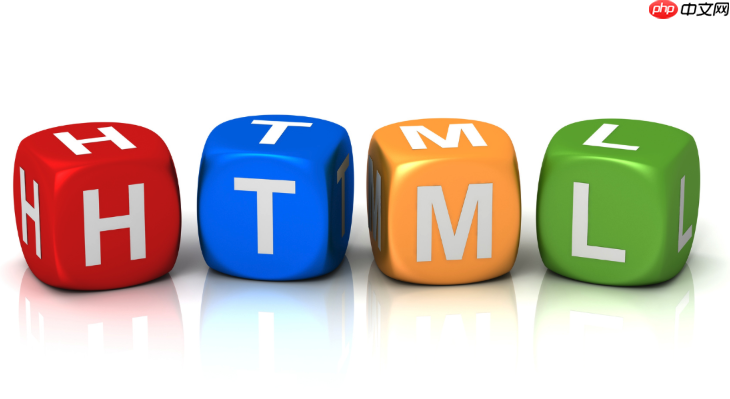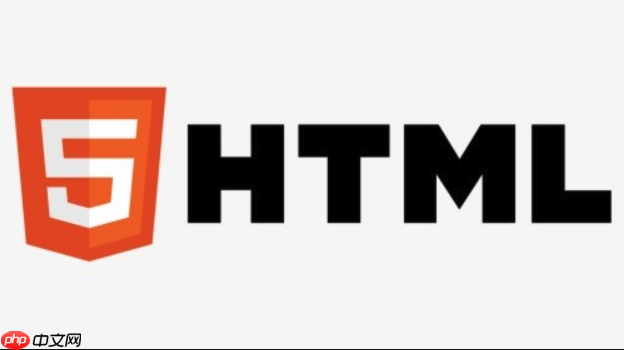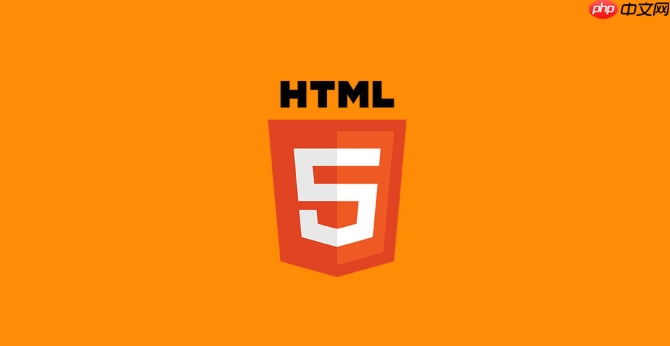html文档的<head>标签是网页的元信息容器,不直接显示内容,但对seo、用户体验、页面性能和社交媒体分享至关重要;2. 它通过<title>和meta标签提供页面标题、描述、关键词、作者等信息,直接影响搜索引擎排名和点击率;3. 使用canonical标签可解决重复内容问题,robots标签可控制页面是否被索引;4. 通过open graph和twitter cards元标签优化社交平台分享效果,提升转化率;5. favicon增强品牌识别度;6. 正确顺序应为:字符编码、视口设置、标题、元数据、样式表、图标、脚本,且css和js需优化加载方式避免阻塞;7. 建议精简不必要的标签,使用开发者工具和第三方验证工具测试head内容的正确性与有效性。

HTML文档的
<head>

理解
<head>
具体来说,
<head>

<title>
<meta charset="UTF-8">
<meta name="viewport">
<link>
<script>
<meta>
<meta name="robots">
如果你问我,网页的哪些部分对SEO影响最大,
<head>
最直接的影响来自
<title>

接着是
<meta name="description" content="...">
还有
<link rel="canonical" href="...">
最后,别忘了
robots
noindex
<head>
从用户体验和性能的角度看,
<head>
<link rel="stylesheet" href="...">
<script src="..."></script>
<head>
JavaScript文件,如果直接放在
<head>
defer
async
<body>
<head>
defer
async
<head>
再来看看社交媒体分享。你有没有注意到,当你分享一个网页到微信、Facebook或Twitter时,它会自动显示一个标题、描述和一张图片?这背后就是
<head>
<meta property="og:title" content="我的文章标题"> <meta property="og:description" content="文章的精彩摘要。"> <meta property="og:image" content="https://example.com/image.jpg"> <meta property="og:url" content="https://example.com/mypage.html">
这些标签让你的内容在社交平台上以更美观、更具吸引力的方式呈现,大大提升了分享的转化率。如果缺少这些,你的链接分享出去可能就只是一行URL,效果大打折扣。
最后,别忘了那个小小的
favicon
<link rel="icon" href="/favicon.ico">
<link rel="icon" type="image/png" href="/favicon.png">
构建一个高效的
<head>
首先是顺序问题。虽然HTML解析器很强大,但遵循一定的顺序能带来更好的性能和兼容性。我通常会建议这样排列:
<meta charset="UTF-8">
<head>
<meta name="viewport" content="width=device-width, initial-scale=1.0">
<title>
<link rel="stylesheet" href="...">
<link rel="icon" href="...">
<script src="..."></script>
defer
async
<body>
这是一个精简的
<head>
<!DOCTYPE html>
<html lang="zh-CN">
<head>
<meta charset="UTF-8">
<meta name="viewport" content="width=device-width, initial-scale=1.0">
<title>我的个人博客 | 前端开发与生活分享</title>
<meta name="description" content="分享前端开发技术、个人项目经验与生活感悟。">
<meta name="keywords" content="前端开发, JavaScript, CSS, HTML, 博客">
<meta name="author" content="你的名字">
<link rel="canonical" href="https://yourblog.com/post-title.html">
<!-- Open Graph for Social Media -->
<meta property="og:title" content="我的个人博客 | 前端开发与生活分享">
<meta property="og:description" content="分享前端开发技术、个人项目经验与生活感悟。">
<meta property="og:image" content="https://yourblog.com/images/share-thumbnail.jpg">
<meta property="og:url" content="https://yourblog.com/post-title.html">
<meta property="og:type" content="article">
<!-- Twitter Cards -->
<meta name="twitter:card" content="summary_large_image">
<meta name="twitter:site" content="@yourtwitterhandle">
<meta name="twitter:title" content="我的个人博客 | 前端开发与生活分享">
<meta name="twitter:description" content="分享前端开发技术、个人项目经验与生活感悟。">
<meta name="twitter:image" content="https://yourblog.com/images/share-thumbnail.jpg">
<!-- Favicon -->
<link rel="icon" type="image/png" href="/favicon.png">
<link rel="shortcut icon" href="/favicon.ico">
<!-- CSS Stylesheets -->
<link rel="stylesheet" href="/css/main.css">
<link rel="stylesheet" href="/css/article.css">
<!-- Analytics or other non-blocking scripts (use defer/async) -->
<script src="/js/analytics.js" async></script>
<script src="/js/some-feature.js" defer></script>
</head>
<body>
<!-- Page content -->
</body>
</html>其次是精简。不要在
<head>
keywords
最后,测试和验证。使用浏览器开发者工具(F12)检查你的
<head>
以上就是head标签的用途是什么?网页头部包含哪些内容?的详细内容,更多请关注php中文网其它相关文章!

每个人都需要一台速度更快、更稳定的 PC。随着时间的推移,垃圾文件、旧注册表数据和不必要的后台进程会占用资源并降低性能。幸运的是,许多工具可以让 Windows 保持平稳运行。

Copyright 2014-2025 https://www.php.cn/ All Rights Reserved | php.cn | 湘ICP备2023035733号